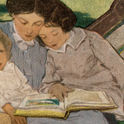This past summer, five years after the campaign first began, protesters energised by the toppling of Edward Colston during the Black Lives Matter protests gathered once again at Oriel College, Oxford to demand the removal of a plaque and a statue memorialising Cecil Rhodes. Since 2015 the College has gone back and forth, changing its mind as to the disposition of these memorials. An initial agreement to remove them was quickly replaced by a claim that the items were sufficiently significant that they should be listed with Historic England and thus protected. Ultimately Historic England declined their application. After the protests this summer, Oriel again announced that both the plaque and the statue would be removed, but not before a commission of inquiry had reported in early 2021. Rhodes thus still looks down on Oxford’s passers-by from his heights on the building and nothing has yet changed.
Louise Richardson, Oxford’s Vice-Chancellor, has lamented the dangers of hiding from history that she thinks the removal of the pieces will precipitate. As a historian I’m sympathetic to her position, but we cannot disregard the hurt and the anger of protesters nor indeed the wider politics that statuary and other memorials represent. I want, therefore, to suggest that there may be a third way to consider, which would involve neither removing the items nor accepting their current celebratory mode. Oriel could—should—commission an artist whose cultural, political and other histories empower them to speak back to Rhodes and all he stands for, and their piece should be placed in the College in such a way that ensures the contrast cannot be avoided by the onlooker.
The College could invite a black British artist, perhaps a Zimbabwean or South African, to shape a memorial to those whose sufferings made Rhodes wealthy enough to endow Oriel, or a piece that spells out a critique of the colonial mindset. There are dozens of examples of thought-provoking art in this genre. Think of the London-based British Caribbean artist Roshini Kempadoo, whose 1995 Sweetness and Light combines ghostly colonial images of black women with the pillars of a grand house built on the proceeds of their bodies. Then there’s Nomusa Makhubu, the South African artist and critic, who inserted pictures of herself into colonial photos for her Self-Portrait portfolio (2014). In Australia, indigenous artists Brook Andrew and Helen Johnson produce work keenly critical of the colonial past. Cree Canadian painter Kent Monkman, British-Nigerian artist Yinka Shonibare, and in the US figures such as Kara Walker, Carrie Mae Weems, Lyle Ashton Harris and Lili Bernard are all making art that is neither didactic nor derivative but makes the case for the ills of colonialism with startling clarity.
Oriel has the opportunity to highlight the work of a contemporary artist. They would get paid (more important than ever given the strain the arts are feeling in 2020) and would have a voice at the very heart of the former Empire. Careful captioning of the work could make clear the critique, the decision; leaflets at the Porter’s Lodge could detail the history and the plan for curious visitors. The history is subject to permanent appraisal, and likely by art that is more innovative and passionate than the dull formalism of statuary and plaques can ever be.
*
The very act of memorialising figures from history in looming statues, it seems to me, is however the underlying problem. Maggie Hambling’s spectacularly tone-deaf monument to Mary Wollstonecraft, recently unveiled in north London, made me think again about the entire practice. This year’s “best headline award” must go to the Guardian for the memorable “would a man be ‘honoured’ with his schlong out?” (10th November 2020). But isn’t the pressing question why we are still intent on statuary commemoration at all? We’re buying into a practice that it’s time to abandon—or at least to put under the microscope.
I’m no more enamoured of Gillian Wearing’s 2018 monument to Millicent Garrett Fawcett in Parliament Square. Wearing’s work is about as traditional as it gets in this instance, in much the same tradition as the 11 male statues it joins, and she does have her kit on (even Gandhi, one of the best-known disrobers of the 20th century, is clothed on his plinth). It’s not insignificant, of course, that the three most recent additions are two anti-colonial leaders (Gandhi and Mandela) and a suffragette, in an effort to honour people other than the Great White Men of History.
But these contemporary recognitions of the great and the good surely reinforce the myth of heroic individuals and their lonely battles. For nigh on half a century now, historians have argued that life doesn’t work that way: that however prominent or forceful an individual is, the warp and weft of the historical moment, the actions and thoughts of the multitude, of supporters and detractors, of resisters and collaborators, of people whose names we might never know and whose images are not raised on celebratory plinths are just as central to our histories as those we continue to memorialise.
The anti-colonial artists who could so powerfully talk back to Rhodes and his ilk know that. Their work asks us to consider the everywoman and the everyman whose contributions to history are, perhaps, trampled underfoot as we continue to memorialise the allegedly superior individuals who look down from their pedestals. Such memorials represent a view of history and indeed of humans we desperately need to reconsider, a view that perpetuates the fiction of singular greatness.
There’s an irony to Richardson’s cogent fear that removing statues will hide our history: we’re already hiding so much of it with our emphasis on the few and our forgetting of the many. Oriel has the chance to offer a counterbalance: to make a powerful statement that will recognise and finance the work of minority artists as well as acknowledge the reality of Rhodes’s actions. And just maybe it will help us reconsider who, why and how we choose to commemorate. The time to do so is long past due.
Should we stop erecting statues?
The Cecil Rhodes issue requires immediate remedy. But why do we erect monuments at all?
December 24, 2020

Steve Parsons/PA Wire/PA Images












